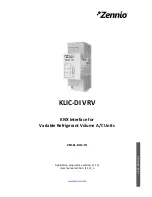
1
•
single channel load: 3A
Specifications
•
selectable input signal:
•
working with LED strips or RGB modules
the fussiest of partygoers.
•
7 effects to choose from
•
power
supply: 12 VDC
•
board size: 79×58 mm
music, but also good lighting. Presented
RGB LED
controller circuit will even meet the expectations of
- microphone (MIC)
- LINE IN socket
The key to a successful event is not only a good
The programme then calculates the light intensity
value for each channel and controls the output
transistor in proportion to the result. Activators are
transistors T1...T3 (BUZ11) with a high current-
carrying capacity. There is a LINE IN input on the
board for direct input of an AUDIO signal of 0.7 V
(typical headphone output). You can select the sound
source using the SEL jumper: CINCH (RCA) or
microphone (MIC).
Electrical diagram of the device is shown in Figure 1. It
consists of a microcontroller, an operational amplifier
and power transistors. The input signal is provided by
High: 13…14 kHz.
Medium 6...7 kHz.
the C1 capacitor to the input of the operational
amplifier. The input polarising voltage is determined
by a divider made up of resistors R9, R10, R13, R14.
The microcontroller (ATmega8) is clocked by an
internal RC generator operating at 8 MHz. Analogue
signal from the audio amplifier is measured using an
A/D converter and is delivered to the
PC0 input. The program 'selects' components in the
following frequency ranges from the audio signal:
Low 500 Hz...2 kHz.
Circuit description
RGB LED Illuminophony
AVT 1853
ASSEMBLY DIFFICULTY
kits
DOWNLOAD






















